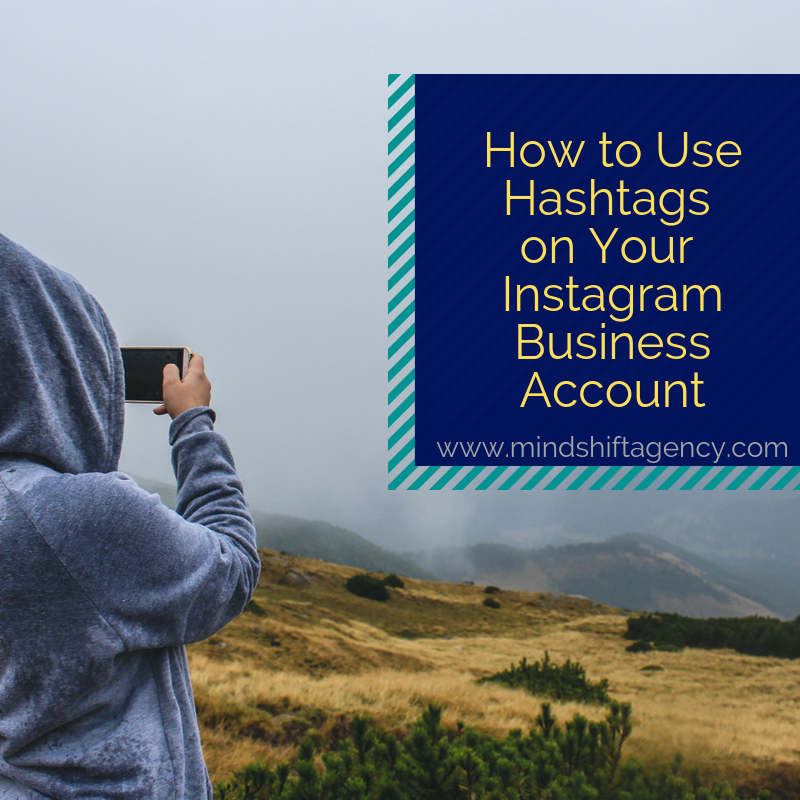How to Use Hashtags on Your Instagram Business Account
Just setting up your Instagram business account? Hoping to grow your following, promote a new product, or attract an audience to your upcoming event? Hashtags are one of the best ways to achieve all of those goals!
Keep reading to discover how to:
- Track your hashtags.
- Find out what your competitors and followers are hashtagging.
- Discover related hashtags.
- Narrow down your hashtags.
- Figure your number.
- Create a brand hashtag.
- Create a campaign hashtag.
1. Track your hashtags.
Before you started posting on social media, you probably (hopefully!) created a spreadsheet to log all of your posts, and track which ones were the most liked, commented on, or shared. Take the same approach to hashtagging.
Before you start hashtagging, you need an efficient way to track your hashtags. Create a spreadsheet to manually track which hashtags you use, when you use them, and which ones are connected to your most popular posts.
As your spreadsheet builds, you’ll notice trends and relationships between particular hashtags and specific posts. Use this helpful correlation to discover which ones are best for being true to your brand, delighting your followers, and gaining new friends!
After your hashtag and Instagram strategy becomes more advanced, you may want to consider switching to a tool that will track your data and report which hashtags gain the most attention.
2. Find out what your competitors and followers are hashtagging.
Okay, your spreadsheet is ready to be filled with catchy and relevant hashtags! But where do you begin?
The easiest way to generate hashtag ideas is to see which ones your competitors or followers use on their own photos. Spend a few hours browsing other profiles in your industry, researching related topics, scanning to see the hashtags that your followers use, or checking out the influencers in your field. Don’t forget to track this data in your spreadsheet as well!
The easiest way to search for competitors or hashtags is through the Instagram search feature, where you can specifically search for profiles or topics.
3. Discover related hashtags.
Speaking of searching on Instagram, you can specifically search for hashtags. When you type in a hashtag, related hashtags show up in a scroll-down menu. For example, when you type in “#instagram,” related hashtags include “#instagram_kids” and “instagramer” and “catsofinstagram.”
This helpful feature is the best brainstorming tool! In your spreadsheet, make a list of related hashtags to try out.
4. Narrow down your hashtags.
Your spreadsheet is brimming with hashtag options! Narrow those down to the ones you think will be most beneficial to your brand. Or create a plan that allows you test out varying hashtags and let the results dictate which ones make the cut.
Why not include all of the hashtags? More specific and less popular hashtags are actually best for your brand. First of all, you’re delivering exactly what someone is looking for (#goldenretrieverpuppies instead of just #puppies). And you’re fighting against less competition (377k vs 39M).
Look out for the popular trends where everyone tags a certain hashtag in their post. Like tagging #marketing in their photos...from inspirational quotes to dinner menus, to memes of people clapping and pictures of supermodels. Opt for more specific hashtags to avoid the clutter and irrelevancy.
5. Find your number.
Like we mentioned in the point above, you don’t want to use every possible hashtag that could remotely be related to your post. Instead, find your number. How many hashtags per post is the right amount for your brand? 91% of brands use less than eight per post, while others use as many as 30 (the maximum limit).
You won’t be able to find your number until you test out how many hashtags is best for your business. Allow a few months of trial and error until you hone in on the best number.
6. Create a brand hashtag.
Obviously, you need to have a hashtag for your brand! #insertyourbusinessnamehere Some people get more creative, but it’s essential that you are easy to find and that your hashtag is obviously your brand. Try to correlate with your other social media account names as well.
Follow your hashtag and reply to likes, comments, and reshares.
7. Create a campaign hashtag.
This is a bit more difficult than just a basic brand hashtag. If you are running a campaign and can gain some Instagram hashtag momentum, the results will yield big time!
The hardest part? Making it captivating, funny, memorable, and clever.
For example, Disney asked their followers to #shareyourears, Nintendo launched #12switch, and Lay’s #DoUsAFlavor campaign.
Gear up the anticipation for your upcoming event, promote a new product launch, or gain traction by engaging with followers by crafting a witty and re-hashable hashtag.
Don’t forget to also follow this hashtag so you can engage with the people who are talking about your brand.
Get hashtag-ing.
Your spreadsheet should be filling up with hashtag ideas and your instagram pictures should be getting populated with trial hashtags. Keep track of the results until you discover the best hashtags and the perfect amount for your brand. Your business will #thankyou ! Happy hashtag-ing!

